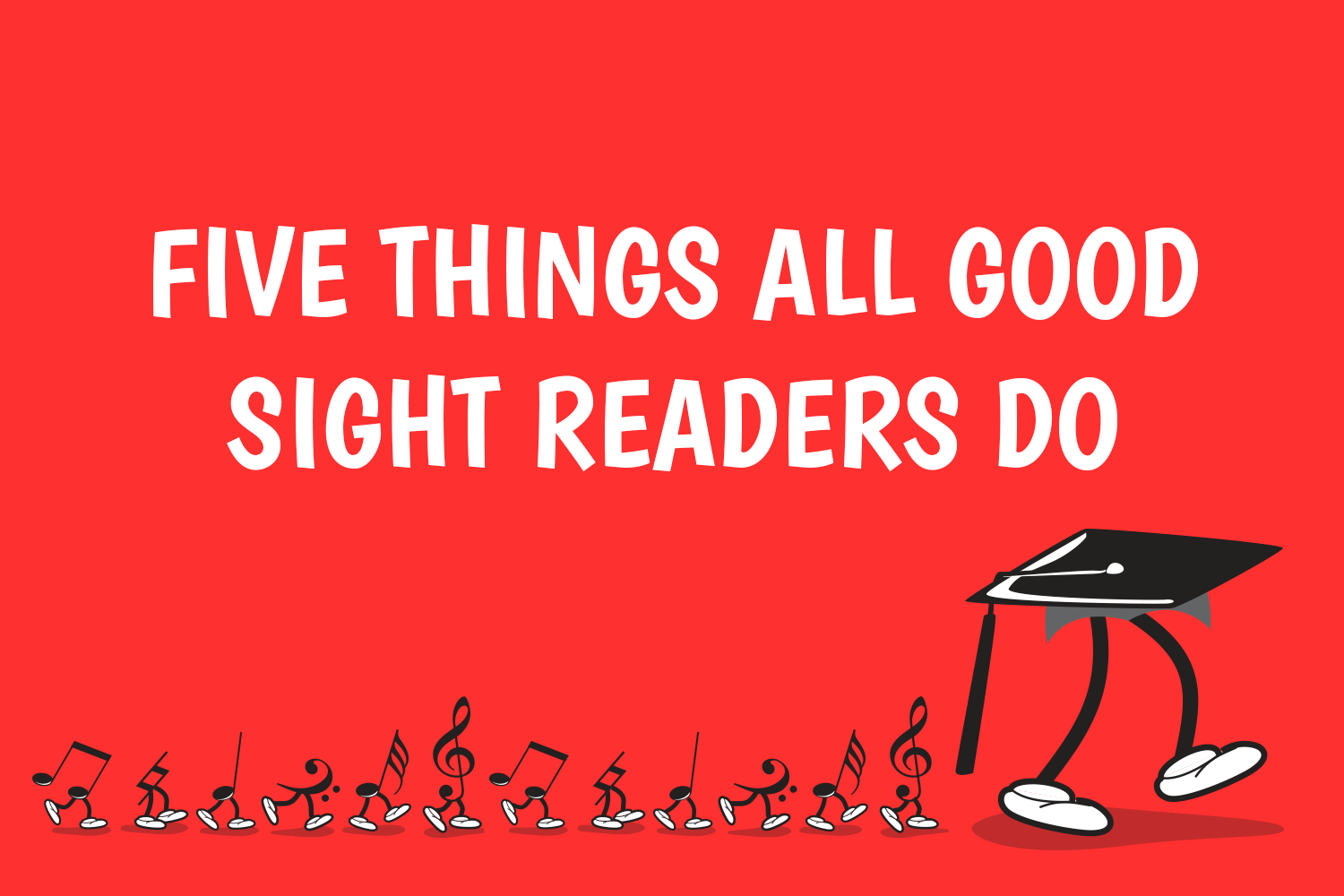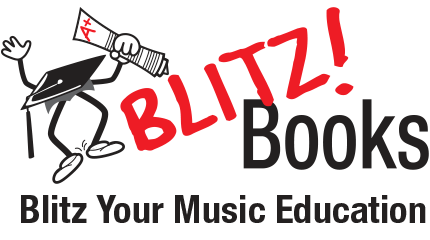Five Things All Good Sight Readers Do

If you’ve ever had the privilege of watching a good sight reader play with ease from a tricky score, it is awe-inspiring. Students experience this with us teachers, when they watch us give demonstrations of their pieces. They say things like “How do you DO that?”. I always take great pleasure in informing them that they too can harness this skill set: all they need to do is set aside the time to practice it.
If you are a good sight reader, it’s because you have done a LOT of it. You have a great understanding of rhythm, pitch, patterns, chords and expression markings, and you can instantly break these down as you read the music, enabling you to effortlessly produce a fluent performance at sight. That’s great! But that’s not what I’m talking about here.
This blog post is about five much more general things that good sight-readers do. I’m not talking about the basics of reading rhythm, pitch, patterns and chords. I’m talking about five things that happen in addition to the reading of the actual music. All good sight readers do these things: scan, edit, guess, predict and fudge.
1. Scanning
All good sight readers scan the page thoroughly, looking for patterns and assessing the difficulty. Without scanning through, we can get caught up unnecessarily.
For example, if we are presented with a four-page piece to sight read, we KNOW there is going to be some repetition, because that’s just how music works. So we scan through, looking at the form. We check out the A section and break down the rhythm, pitch, patterns, and chords. We can see where the B section begins and we look at how these things are approached differently. Then, if the piece is in ternary form, we will be able to see the return of the A section and we scan through to compare what is the same and what is different from the first A section. Without scanning through and noticing these things before playing, the novice sight reader will be caught up in a seemingly never-ending pressure-cooker situation.
2. Editing
If you endeavour to play every single note on the page, you might end up with a hiccup in the rhythm, which is NOT good. All good sight readers know that pitch must often be sacrificed, in favour of fluency of rhythm and good expression. In an ensemble situation, for example, it’s not a good look if you are a bar behind and playing loudly when everyone else is pianissimo. In many cases, pitch actually becomes bottom priority, whilst rhythm and dynamics are elevated to high importance.
‘Editing’ means that perhaps just the bass line will be played for a bar or so, while the RH recovers. In a 4-note chord that looks complicated, maybe just the top two notes will suffice. Octave passages might be played as single notes. These are all informed decisions are made in every bar based on analysis and musical context.
3. Guessing
There are many instances where we have to make an educated guess on what is happening in the music. For example, if the notes suddenly jump up/down to lots of leger lines, this usually means an octave displacement. If I see a very low note on many leger lines in the bass at the end of a piece, there is no way I am going to count the leger lines and figure out the name of the note, because there’s no time! I’m going to guess that the note is the tonic. And I’m usually right.
All good sight readers guess the odd note here and there. Again, these are educated guesses, based on context.
4. Predicting
All good sight readers will predict what is happening in the music. For example, an understanding of harmony will give us a head start in a perfect cadence that is split over a difficult page turn. In ternary form, we predict the music is going to have a very similar structure to the opening, and certainly if we understand Sonata form, we can predict the keys of the melodies in the return of the A section. Like in the ‘guessing’ skill, we can predict that notes suddenly in a different register are likely to be octave displacements of the original melody.
5. Fudging
Since fluency is everything when it comes to performance, and sight reading is simply performing at sight, all good sight readers will fudge some of the notes or and/or fake showmanship when necessary… all in the name of prioritising the rhythm, maintaining the style and keeping the flow. Playing ANYTHING in the correct rhythm, even if it sounds weird, is better than silence. Keeping a poker face whilst doing this will fool any audience into believing you are indeed playing what is on the page.
Conclusion
So yes: we need to be great at breaking down the concepts of rhythm, pitch, patterns, chords and expression, but in addition to this we have to scan, edit, guess, predict and fudge our way through, in order to give a FLUENT performance.
It is so important to demonstrate and teach these additional five skills to our students, so that they realise good sight-reading is achievable, pleasurable, and not at all something reserved for elite musicians.

Thank you so much for this. You have very clearly explained an amazing thing that sight readers do. I have done so much sight reading and found that I have had to do this whether I know the music or not – especially in accompanying. Sometimes the singers do their own thing and you have to adjust what you do and these are the same skills for that kind of work. I will show this to some of my higher grade students.
Thanks Ingrid! I hope your students also find the article helpful.
I would really like to be able to print this article out. Is there a way you can make this possible? It’s a very, very good article on the process involved in being a good sight reader. Thank you for sharing your thoughts.
Hi Diane, you are most welcome to print the article, the normal ‘print’ command on your computer should do it!
Great article Samantha. I know for certain I’ll be a lousy sight reader when I haven’t practised for a while.